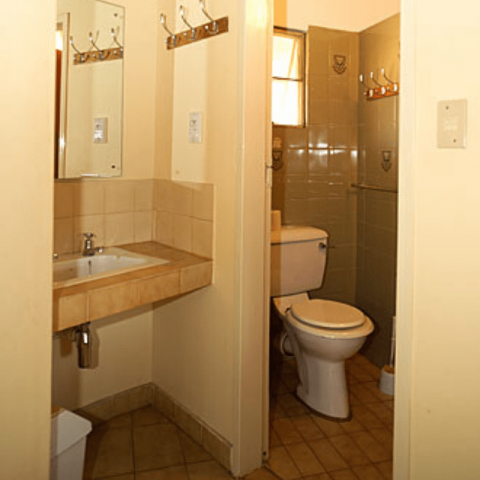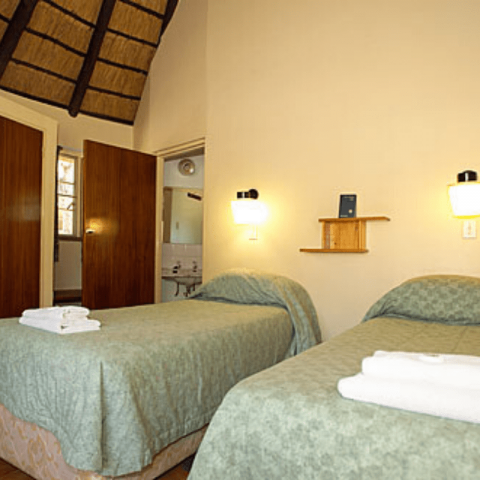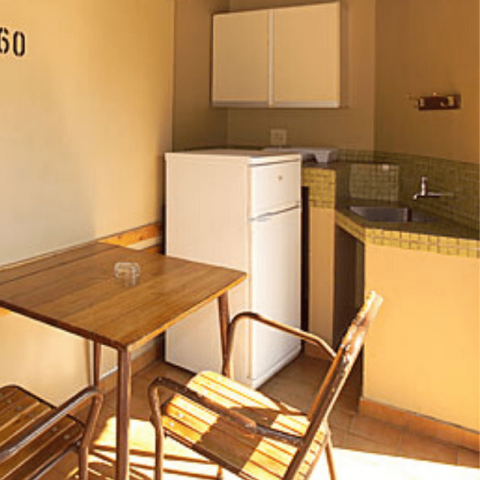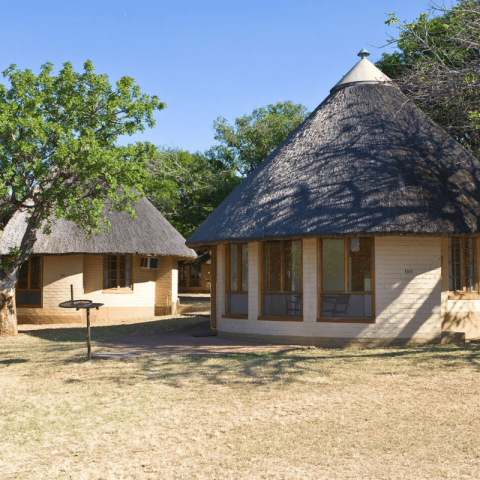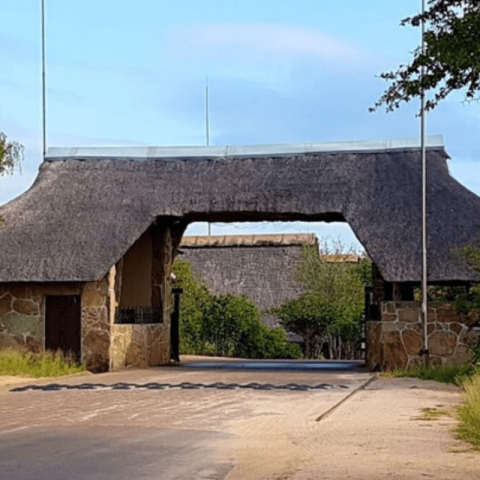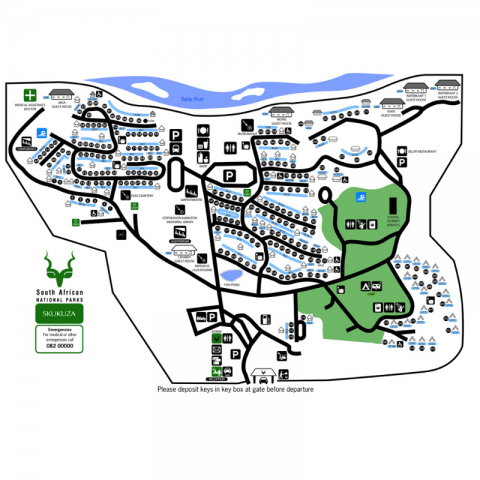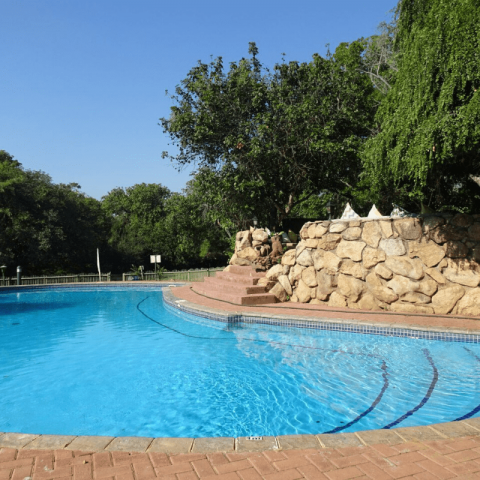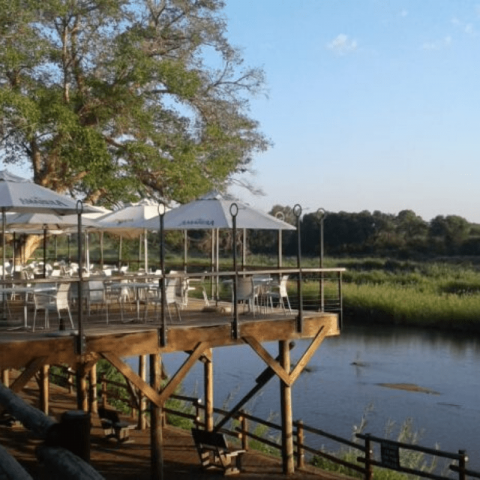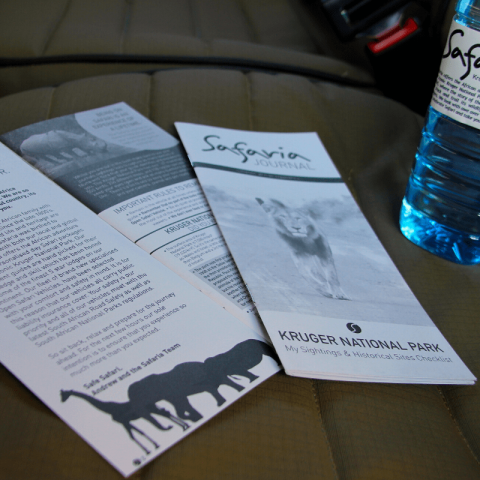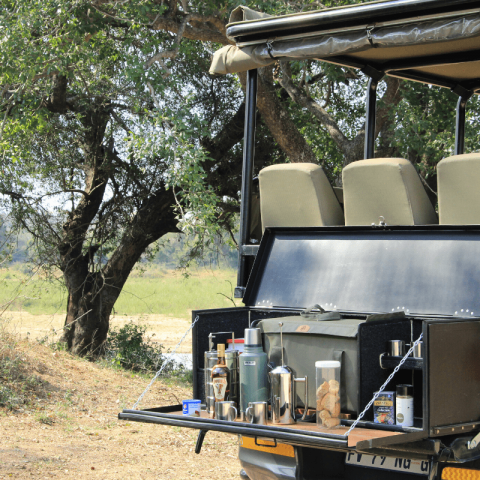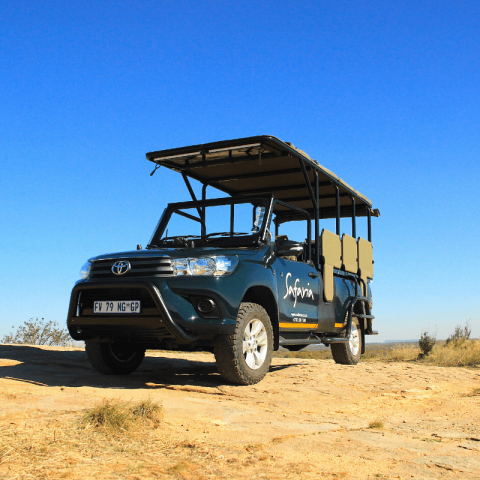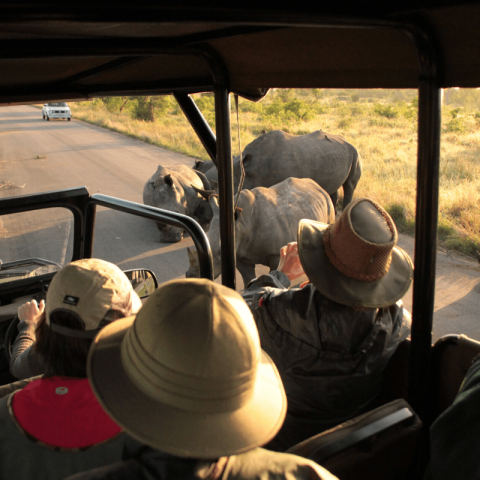Skukuza Camp
From the Zulu name "Sikhukhuza" that was given to the first Warden, James Stevenson-Hamilton, Skukuza Camp is known as the Capital of Kruger and is the largest camp with the widest variety of accommodation available. Skukuza was previously known as Sabi Bridge and it was the residence of of the first warden from 1902 until 1942. Its a camp that is often under rated and overlooked because fo its size and busyness, but when the dust settles and late afternoon sets in, it offers an incredible atmosphere both inside and outside the camp fence. Skukuza's location makes it very strategic camp and can be used as a overnight for a journey to the far North or a final night return leg to explore the South before departing the Park.
The Cattle Baron restaurant offers a step-up from the typical menu found in most of the other 12 main camps. Its position overlooking the Sabie River also delivers some great game viewing with our guests encounter both Leopard and Lion from the breakfast table.
Something very special about Skukuza is the rich riparian forrest that its sits in, some of the Figs, Mahoganies, Matumi's and Jackalberry's are well over 200 years old with an abundance of bird life. Deeper into the savanna Skukuza is surrounded by thorn-thicket and then mixed woodland with deep undulations in the topography. Apart from the river there are a number of wonderful water points that surround Skukuza. These include the famous Lake Panic, low-water bridge, Dela Porte and Renoster-koppies artificial waterholes.
History of the Camp :
Skukuza is the largest and oldest rest camp in Kruger National Park, located in the southern part of the park in South Africa. The camp is named after a Tsonga chief, Sabie River and the area around it.
The history of the camp dates back to the early 1900s when the Kruger National Park was first established as a protected area to conserve the wildlife and habitats of the region. In 1902, the park's first ranger, James Stevenson-Hamilton, established his headquarters in the area that would later become Skukuza.
Over the years, the area developed into a hub for conservation efforts, with researchers and rangers based in the area. In 1927, the park authorities decided to build a permanent rest camp in the area to cater to tourists visiting the park. Construction began the following year, and the camp was designed to blend in with the natural surroundings, with thatched roofs and stone walls.
Skukuza was initially a small camp with basic facilities, including accommodation units, a restaurant, a shop, and a petrol station. Over the years, the camp has undergone several renovations and upgrades, with more modern facilities and amenities added to meet the changing needs of visitors.
Today, Skukuza Camp is a popular destination for tourists to Kruger National Park, offering a range of accommodation options, including chalets, cottages, and camping sites. The camp is known for its beautiful location on the banks of the Sabie River and its prime location for wildlife sightings, including the Big Five animals (lion, leopard, elephant, rhino, and buffalo). The camp also offers guided walks, game drives, and other activities for visitors. Additionally, the camp serves as the headquarters for Kruger National Park's administration, conservation efforts, and research initiatives.
Key Mammal species in this area include :
- Lion
- Leopard
- Cheetah
- Buffalo
Key Bird species in this area include :
- African Fish Eagle
- Black Crake
- Malachite Kingfisher
- Saddle-billed Stork
- Martial Eagle
The Camp Accommodation :
Campsites
- 80 x tent or caravan sites, with power point. Communal ablutions and cooking facilities. (24-hour boiling water, electric hotplates and washing up facilities) Maximum of 6 persons per site.
Safari Tents
- 12 x 2-bed and 8 x 4-bed permanent furnished canvas tents on stilts, including a fridge, standing fan inside tent and small veranda. Communal ablutions and communal kitchens available.
Bungalows
- 178 x round–walled, single-room African style units with thatched roofs, 2 or 3 beds per unit, equipped with en-suite ablutions (most with showers, but some with baths). Some units have air-conditioning, some have fans. Kitchenettes vary: some have hotplates and sinks; some have only sinks, while some have neither. Cutlery and crockery can be provided and hired from reception. Please confirm when booking.
Luxury Bungalows
- 20 x 1 bedroom units, with en-suite bathroom. The units each have a double bed, quality decor, air-conditioning and television offering limited DSTV channels. You have a choice of luxury units with a riverside view and kitchen, or semi-lux units without a river view and with communal kitchen. Bungalows along the river frontage have a more modern design with glass sliding doors.
Family Cottage
- This unit forms part of the Waterkant Guest House complex and is known as Waterkant 2. It offers a well equipped kitchen, 4 bedrooms, (2 single beds in each room), a living room, one bathroom and a river view.
Guest Cottages
- 15 x 4 or 6-bed units with well equipped kitchens, multiple bedrooms and usually more than one bathroom. Some have 2 double beds so visitors should confirm bed numbers and interior contents when booking.
Guest Houses
- These are large luxury units in prime positions, all with river view. There are well-equipped kitchens (with microwave ovens), multiple bedrooms and bathrooms. Limited channel DSTV televisions are provided.
- Moni: Sleeps 8, with 4 bedrooms (2 single beds in each room)
- Nyathi: Sleeps 8, with 4 bedrooms (2 single beds in each room)
- Waterkant 1: Sleeps 8 with 4 bedrooms (2 single beds in each room)
- ABSA: Sleeps 12, with 6 bedrooms (2 single beds in each room)



